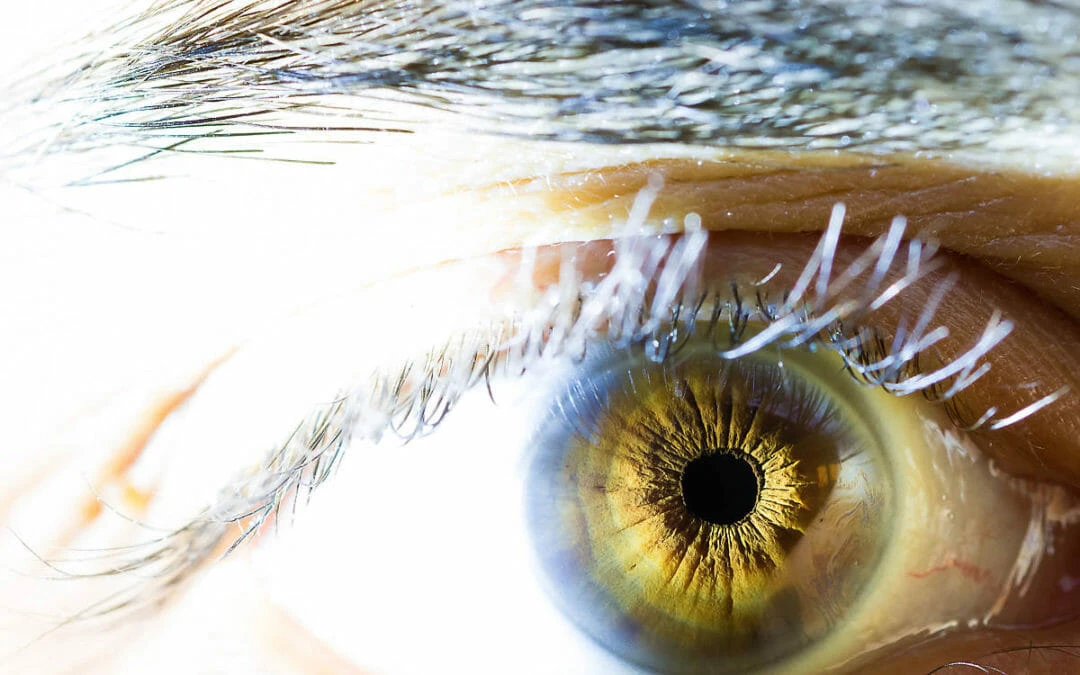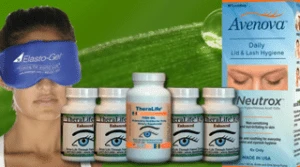Symptoms of dry eye is common and often chronic problems, especially in elderly adults.
Some people do not produce enough tears to keep the eyes wet and comfortable. This condition is known as dry eye, one of the most common eye conditions.
The tear is spread by blinking on eyelids and the cornea has the same shape. Tear provides a lubricating effect on skin cells, reduces eye infection and removes toxins. Excess tears are pumped into tiny canals inside the eyelids and discharged through nose.
Dry eyes happen because the production of tears does not work properly.
Overview – Symptoms of dry eye
Dry eye is usually caused by the lack of proper tears to lubricate your eyes.
Tears often have a variety of reasons. In some cases, dry eyes occur when a person produces too much tears or if it produces too much tear. It causes inflammation and damage to the eyes.
Dry eye feels uncomfortable. The skin of the eyes can sting and burn. Dry eyes can occur on certain occasions in airplanes or in rooms with air-conditioned rooms. Treatment of dry eyes can increase comfort.
The lacrimal tear glands continually secretes tears which moisten, lubricate, and protect the surface of the eye. Excess tears drain into small ducts which empty into the nasal cavity.
Symptoms of dry eye
People who suffer from dry or damaged eyes may experience reddish eyes, irritated or greasy eyes.
Dry Eye Symptoms
Dry eye can result in symptoms including: A sandy or burning sensation on the eye surface Other eye discomfort Blurred vision Eye redness that progresses through the day
Composition of Tear
Tears are made up of three layers: oil, water, and mucus. Each component protects and nourishes the front surface of the eye.
A smooth oil layer helps prevent evaporation of the water layer, while the mucin layer spreads the tears evenly over the surface of the eye.
If the tears evaporate too quickly or do not spread evenly over the cornea due to deficiencies with any of the three tear layers, dry eye symptoms can develop.
A healthy tear film on the eye is necessary for good vision.
Causes of symptoms of dry eye
This is caused by either a decrease in tear creation or an increase in tear evaporation.
Dry eyes occur due to various factors that affect tear tissue. You have 3 parts in your skin: fatty oil, and aqueous fluid. It is usually used to keep your eyes lubricated, smooth and transparent. A problem in this layer can lead to dry eyes. The causes of tear film dysfunction include hormone changes, inflammation of the eyeslid gland. In many cases the causes are reduced tears or increased tear evaporates.
This could mean:
- Your glands don’t make enough tears to keep your eyes wet Your tears dry up too fast Your tears just don’t work well enough to keep your eyes wet.
- Autoimmune diseases (including rheumatoid arthritis, lupus, Graves’ disease, diabetes, scleroderma, and Sjogren’s syndrome).
- Hormonal changes in women after menopause and during pregnancy.
- Poor blinking habits while reading or looking at a computer screen for long periods of time.
- A dry, indoor environment.
Contact lenses.
Medications
Certain medications (including tranquilizers, antihistamines, certain heart medications, diuretics, birth control pills and ulcer medications). Drugs That May Cause Dry Eyes include the following:
- Acetophenazine
- Amitriptyline
- Antazoline
- Atropine
- Azatadine
- Belladona
- Beta Blockers
- Brompheniramine.
Increased tear evaporation
The oil film created in small glands around a lid (“meibomian gland”) can be blocked and may be damaged. Blocked meibomian glands can be seen in patients prone to rosacea or other skin conditions.
Evaporative dry eye : This is when your tears evaporate too quickly. The most common cause is meibomian gland dysfunction.
Reduced tear production
Dry eyes are caused when you don’t have enough water. The medical name for this condition is keratoconjunctivitis.
Accommodative dysfunction
Accommodative dysfunction is an eye-focusing problem resulting in blurred vision—up close and/or far away— frequently found in children or adults who have extended near-work demand.
Meibomian Gland Dysunction
The most common cause is meibomian gland dysfunction. This means the glands in your eyelids that produce the outer, oily layer of your tear film don’t work properly.
Causes & risk factors for symptoms of dry eye
Dry eyes occur if tears cannot be produced or drained properly. The dry eye can develop from irritants that damage the front surface and dry eyes can cause eye infections.
Tear production is often associated with an autoimmune or inflammatory systemic condition such as Sjögren’s , sarcoidosis , lupus or rheumatoid arthritis , which can damage the tear glands.
Sjogrens Syndrome
You have joint pain, swelling, or stiffness and a dry mouth along with dry eye symptoms.
Age.
Dry eyes are a part of the natural aging process. The majority of people over age 65 experience some symptoms of dry eyes. Gender. Women are more likely to develop dry eyes due to hormonal changes caused by pregnancy, the use of oral contraceptives
Diagnosis for symptoms of dry eye
Dry eyes are diagnosed by comprehensive eye tests.
Tests aimed at measuring the volume or quality of tear produced on the eyes are possible.
Ophthalmologists also use a variety of tests including measuring tear production, special dyes, and evaluation of the constitution of the tear film in order to confirm the diagnosis. These tests serve to rule out other potential problems, such as conjunctivitis, that can produce the same symptoms.
Diagnostic staining of the cornea and tear film Measurement of tear film break-up time (TBUT) Measurement of rate of tear production (Schirmer test) Measurement of concentration of tears (osmolality).
Treatments for symptoms of dry eye
Therapies include: Artificial tears or ointments. Punctal plugs to prevent tear drainage. Eliminating dryness and dust. Diet modification. Evaluation of medications. Increased blinking.
Eye drops
If the condition is not sufficiently managed with artificial tears, you might use sustained-release eye lubricants. An insert placed in the eye area slowly dissolves and thickens the tear film.
Your doctor might also recommend prescription eyedrops,
You may also opt for scleral lenses, which are special contact lenses that
Use of eye drops for other eye diseases A rare autoimmune disorder in which the glands that produce tears are destroyed ( Sjögren syndrome )
Punctal Plugs
Keeping natural tears in the eyes longer can reduce the symptoms of dry eyes.
If tears are draining too quickly from your eyes, your doctor may suggest putting special plugs (called punctal plugs) in your tear ducts (small holes in the inner corners of your eyes). These plugs can help keep your tears in your eyes.
The tear ducts can be blocked with tiny silicone or gel-like plugs that can be removed if needed. The con for this procedure is your tear ducts can get infected.
Or a surgical procedure can permanently close the tear ducts.
In either case, the goal is to keep the available tears in the eye longer to reduce problems related to dry eyes.
Increasing tear production.
Prescribe eye drops that increase tear production. Taking an omega-3 fatty acid nutritional supplement may also help. Treating the contributing eyelid or ocular surface inflammation. Your eye doctor might recommend prescription eye drops or ointments, warm compresses.
Contact Lenses
You may also opt for scleral lenses, which are special contact lenses that trap moisture onto the eye’s surface.
Prescription Medications
Cyclosporine ( Cequa , Restasis ) . This prescription eye drop helps your eyes boost tear production. Lifitegrast ( Xiidra ). These drops are taken twice daily to kick-start tear production. Varenicline ( Tyrvaya ) . This is a nasal spray that can be taken twice a day in each nostril to increase tear production which can relieve dry eye.
Prevention for symptoms of dry eye
You can take the following steps to reduce symptoms of dry eyes:
- Remember to blink regularly when reading or staring at a computer screen for long periods of time.
- Increase the humidity in the air at work and at home.
- Wear sunglasses outdoors , particularly those with wraparound frames, to reduce exposure to drying winds and the sun.
Research on symptoms of dry eye
What’s the latest research on dry eye?
Scientists are studying what causes dry eye and how we can treat it better. NEI also funds research on new treatment options. Get the latest news on NEI-supported dry eye research
From Mayo Clinic to your inbox
Register free to learn about health issues such as COVID-19, and health advice for managing health. For your benefit and understanding the best information we can combine the information provided in the emails and websites with the information we know about you. It is possible that Mayo Clinic users can receive protected health information. If this is combined with your health information, this information will be treated as your health information and will only be used or disclosed as described below.
Best treatment for symptoms of dry eye- TheraLIfe
References
Treatment Ocular Surface Disease and Dry Eye Clinic at the Wilmer Eye Institute The Ocular Service Disease and Dry Eye Clinic at the Wilmer Eye Institute treats a variety of eye conditions, including dry eye.
Dry eye disease. In: Yanoff M, Duker JS, eds. Ophthalmology . 5th ed. Philadelphia, PA: Elsevier; 2019:chap 4.23.
Margo CE, Harman LE. Dry eye syndrome. In: Kellerman RD, Rakel DP, eds.





